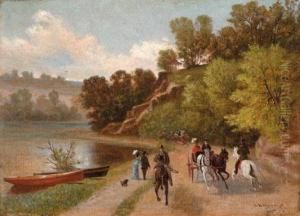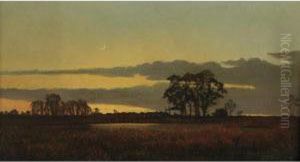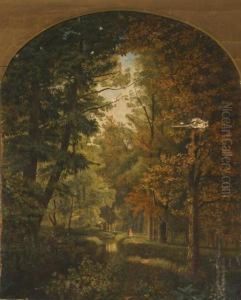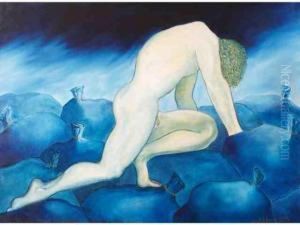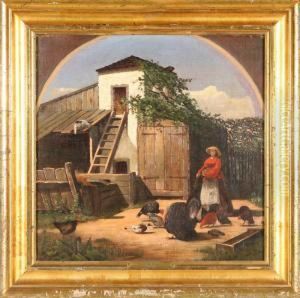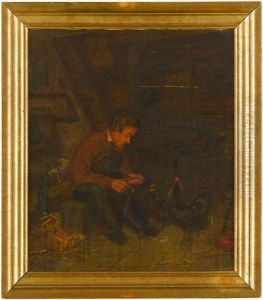George Bacon Wood Jnr. Paintings
George Bacon Wood Jr. was an American artist born on December 13, 1832, in Philadelphia, Pennsylvania. He was part of a generation of artists in the 19th century that contributed to the rich tapestry of American art history, particularly within the realms of landscape and portrait painting. Wood's early life was steeped in an environment that appreciated the arts, which allowed his talents to flourish from a young age. Despite the limited availability of formal art education in America at the time, Wood managed to develop his skills through apprenticeships and self-study, a common route for many artists of his era.
Wood's artistic career spanned several decades, during which he became known for his detailed landscapes and portraits. His work often depicted the natural beauty of the American countryside, capturing the changing seasons and the serene landscapes of the northeastern United States. He was particularly adept at using light and shadow to create depth and emotion in his paintings, a technique that drew admirers and collectors alike. Wood's portraits, on the other hand, were celebrated for their realism and the ability to capture the personality and essence of his subjects.
Throughout his life, Wood remained an active member of the American art community. He exhibited his work at various institutions, including the Pennsylvania Academy of the Fine Arts and the National Academy of Design. His contributions to American art were not only limited to his paintings but also included his role as a mentor to younger artists, helping to nurture the next generation of talent.
George Bacon Wood Jr. passed away on March 10, 1910, leaving behind a legacy of artistic achievement that captured the spirit of America during the 19th century. His work continues to be appreciated by art historians and collectors for its contribution to the development of American art, offering a window into the country's past through the lens of its natural landscapes and the people who inhabited them.
